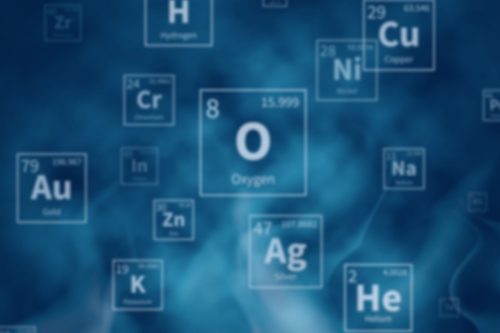
Recreating an aquatic environment must include the understanding of how to maintain specific water parameters. The water is the primary environment for the livestock with lighting, water flow, and micro-biome in the mix. In a closed environment, the inputs and outputs need to be carefully monitored to maintain system equilibrium.
The earlier articles introduced some of the key basic parameters and major chemistry elements that are involved.
See the list below:
- Tier 1 – Basic Water Parameters: Source Water Quality in Total Dissolved Solids, Salt Quality, Temperature, Salinity, pH
- Tier 2 – Dissolved Nutrients
- Tier 3 – Big 3: Alkalinity, Calcium, and Magnesium for stony coral calcification
Trace Elements
Trace elements, what are they? Per the Oxford dictionary, the definition is as follows.
“a chemical element required only in minute amounts by living organisms for normal growth.“
Trace elements are the next layer of the onion to learn about: what they are and why they are important. With the accessibility of ICP (Inductively Coupled Plasma) Spectroscopy water testing, the hobbyist can now receive data about various supported elements. Another driving force with hobbyists and commercial aquaculture facilities who maintain large volumes of water is that the salt and shipping costs have increased significantly. Though water changes is the simplest and tried and true method, supplementing consumed elements is a finer method for maintaining the health of our livestock in this new age.
There are many elements that exist in saltwater but the levels that separate the macro and micro trace elements vary in scale from parts-per-million to parts-per-billion. Normally, most people will not perform an ICP test unless they are troubleshooting an issue or including it as part of their regular maintenance routine.
General Process
Follow the basic dosing steps for any type of supplement:
- Research- Choose an ICP testing service you trust and meets your needs. All testing services have various attributes to consider such as cost, response time, supporting information on how to interpret the data, which supplement products they support and need to acquire. Not all ICP tests check the same elements. Inclusion of elements such as Rubidium and Fluoride will vary.
- Test – Collect a sample, send it in, and wait for the results. This can vary from 3 days to 10 days.
- Review the Data – Determine which elements are out of the suggested ranges and follow the recommendations to manually dose.
- After all the supplements are dosed, maybe over a few days, collect a new sample and test again to verify the compensation is achieved.
- The amount of time between tests can be extended but that will be based on how your livestock health looks and the consumption rate you will determine over time.
- Cadence – Ideally this can be applied as other tests that need to be done but less frequently. Water testing should be a regular routine in this hobby, or else you are just guessing and possibly risking livestock loss. This is part of being a responsible hobbyist.
My Observations
After a few years of testing I decided to include ICP testing on my 510 gallon system as a monthly routine. Some elements are consumed quicker than others and may need daily dosing. You can choose to follow one of the available off the shelf programs or if you are knowledgeable and adventurous go the DIY route. Depending your bioload and the efficiency of your filtration, the mix of required elements will vary.
Pros:
- Excellent troubleshooting tool when livestock take a down turn and normal routines do not seem to address it.
- Improved water chemistry data to monitor with explanations on how and why to use them.
- Individual element control based on your specific system compared to general “all in one” supplements that won’t allow one to normalize levels properly
- Reduces the amount for large water changes in high volume systems
Cons:
- Cost – Depending on the water volume and organisms kept, ICP testing may not be necessary from a cost perspective. Stick with regular water changes as the simplest method with a quality salt.
- Time – The lead time to get results has improved but there’s still a time gap between tests to know if any recommendations are adequate to correct issues.
- Complexity – ICP testing in itself is easy to do but all the elements you may have to purchase to supplement adds complexity to you maintenance routine.
- Standard Reference among all ICP testers is not available- many have submitted water samples taken at the same time to multiple testers and received varying results and repeatability issues. This causes confusion on what value range is correct and would result in improper dosing of the system. Stick with one brand for consistency at least.
To summarize, trace elements are important. The method you use to replenish trace elements will vary depending on the cost, level effort, and effectiveness for the bioload uptake. The absorption rate is proportional to growth so it can be seen as a downside to success with increased cost. But as long as you understand the relationships and what to expect is the price of being in this hobby.










0 Comments